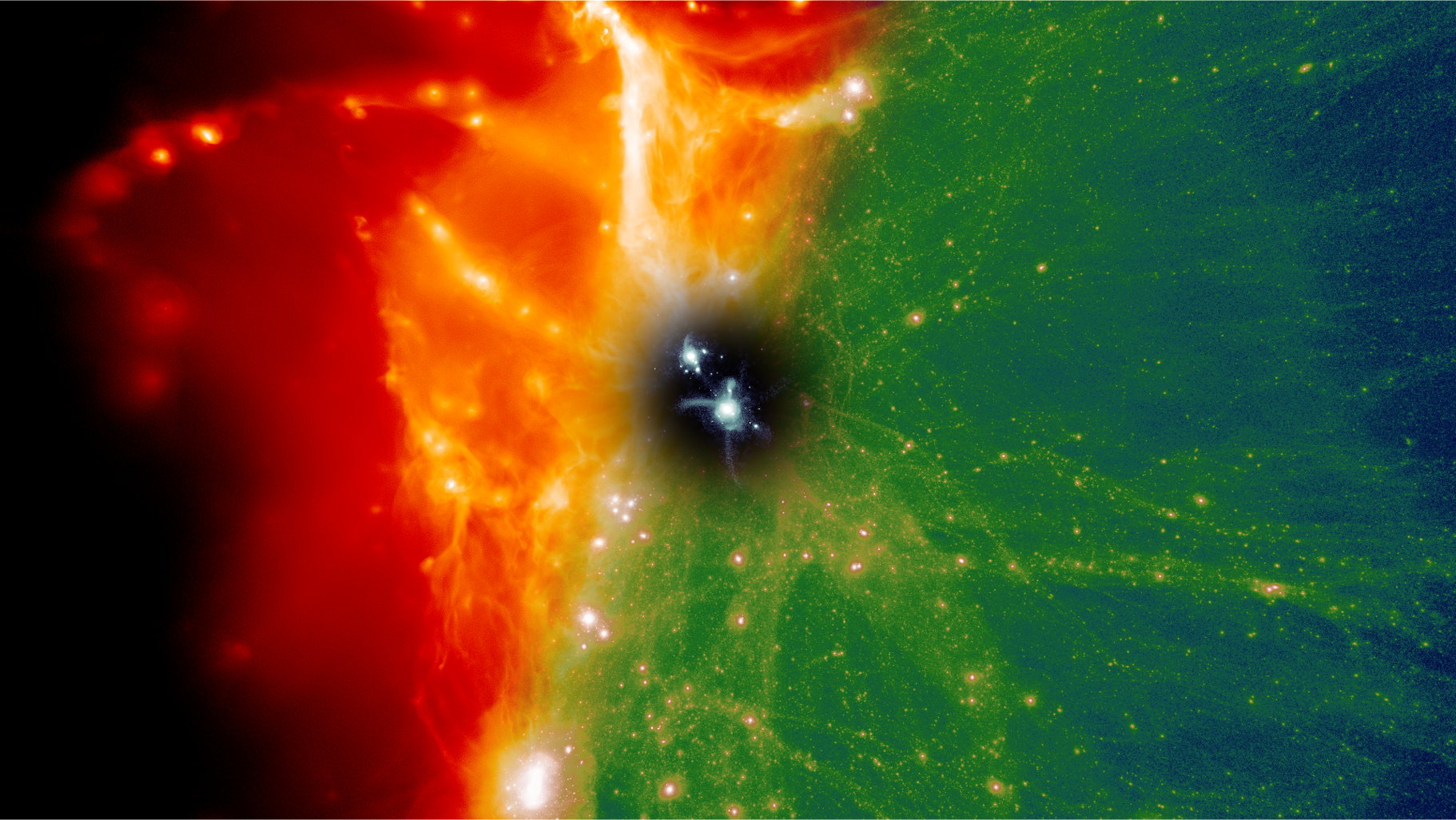Viewing cosmological simulations with virtual telescope
The student will create the first model to map state-of-the-art cosmological simulations into “synthetic skies”, enabling the most informative possible comparison with observations.

This will involve studies of cosmological hydrodynamical simulations, playing leading roles in the development of the state-of-the-art EAGLE and BAHAMAS suites. They will develop a broad range of algorithms aimed at the production of “sky maps” in a range of wavebands appropriate for the interpretation of key observables, to help interpret existing observational surveys and guide future observational strategies. These must be massively-parallel and capable of accommodating datasets comprising billions of resolution elements, each described by multiple variables.
The student will have access to Tier-1 HPC facilities via membership of the Virgo Consortium for Cosmological Supercomputer Simulations and collaboration with the Hartree centre.
A particularly interesting element of the necessary techniques, e.g. ray-tracing, is their suitably for parallelisation on new computational architectures. This element has already been investigated by LBDN researchers as a result of a similar issue being identified through work with the European Centre for Medium-term Weather Forecasting.
Student: Alexander Hill